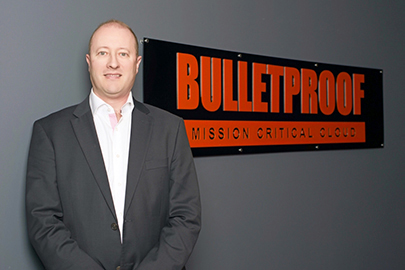Why moving piece by piece to the cloud will see businesses succeed more


Anthony Woodward, CEO at Australian cloud services provider Bulletproof.
The conversation around whether it's a good idea for a business to migrate their on-premises legacy infrastructure into the cloud is no longer the focus, according to Bulletproof CEO Anthony Woodward. Rather, many C-level executives are now looking at what are the best ways to use the so-called cornerstone tool to transform their business.
Woodward believes there are two key drivers behind the increasing adoption of Infrastructure-as-a-Service (IaaS). The first is that businesses believe cloud will give them the competitive advantage to move faster, and the second motivator is that businesses are being required to transform for fear they may be outmanoeuvred by new entrants to the market.
Gartner has predicted the global IaaS market will reach $22.4 billion in 2016, a 38.4 percent increase on last year's market value of $16.2 billion. In fact, the IaaS market is expected to be the fastest-growing public cloud services segment worldwide.
"IaaS continues to be the strongest-growing segment as enterprises move away from datacentre build-outs and move their infrastructure needs to the public cloud," said Sid Nag, Gartner research director. "Certain market leaders have built a significant lead in this segment, so providers should focus on creating differentiation for success."
Latest Australian news
Woodward advises that, aside from finding a managed service partner to help with the process, one of the major considerations that most businesses should reflect on, but do not, is 'bill shock' associated with moving to an IaaS model.
"It's a double-edged sword because you only pay for what you use, but a lot of folks get into a situation where they don't know what they're getting...and that's where cost optimisation is a really key part they should bring," he said.
Woodward adds that, for most businesses, moving from a traditional on-premises infrastructure to an IaaS model often works out for the better from a security point of view, as it forces them to reconsider their IT governance practices.
"What we say is if you have a really good IT governance practice around security you can take that to the public cloud. If you haven't thought about it, then...that transformation process in a lot of cases brings about enhanced security," he said.
Integration challenge
One the most challenging aspects of moving to cloud-based infrastructure is understanding how to integrate the old with the new, says Woodward.
"You're not going to have everything in the cloud tomorrow; things that are in the cloud need to talk to the things that are not yet in the public cloud. So, how do you have it talk to each other?"
Despite the difficulty, businesses that succeed best in the transformation process are those that move piece by piece to the public cloud, mainly because in most cases it requires applications to be re-architected.
"A great example is if you have a database server over here, you could move that database server to the public cloud and consume just cloud compute, and run your own database server, or you could use a database service that's built into the cloud platform that's far more scalable and much cheaper than running your own database server...and you might end up with a much better result," he said.
IT culture shift
The move to cloud-based infrastructure can also bring about a significant culture shift within a business, particularly in the way IT operates. Traditionally, software developers and infrastructure engineers would never work in sync, with infrastructure engineers often leading the charge in making decisions. But the move to a cloud model forces the IT team to take a more DevOps approach to projects.
"Companies are really putting the control of the infrastructure in the hands of the software developers, and that's a real cultural shift inside a lot of organisations that are used to having software development teams over here and the infrastructure guys over there. Normally, the conversation goes 'give me this' and they say 'no', or they say 'we want to do this' and they say 'can't'," he said.
Ultimately, Woodward believes the growing uptake of IaaS by business will drive those who currently specialise in infrastructure to reskill. However, knowledge about infrastructure is not without its advantages, says Woodward, as it can help with understanding about what's going on "behind the scenes" when new cloud features are introduced.
"As much as the development community can use software capabilities to drive infrastructure, if they don't have insights into how infrastructure really works, it's still like doing everything through a keyhole. They're not quite sure what's going on behind the scenes," he said.
Destination: cloud
Looking forward, Woodward believes that all legacy applications will eventually move into the public cloud, although this will not happen for another 10 to 20 years.
"There are a lot of legacy applications, and I call them legacy because they're not going to go through that transformative phase because of a number of reasons," he said.
"Maybe because there is no great reason to -- why incur the cost if you don't have to, especially if there is a private cloud answer that will give you most of the benefits of the public cloud, plus some other benefits that you need for your legacy applications? But certainly, the buying model of buying and owning your data centre is only going in one direction."